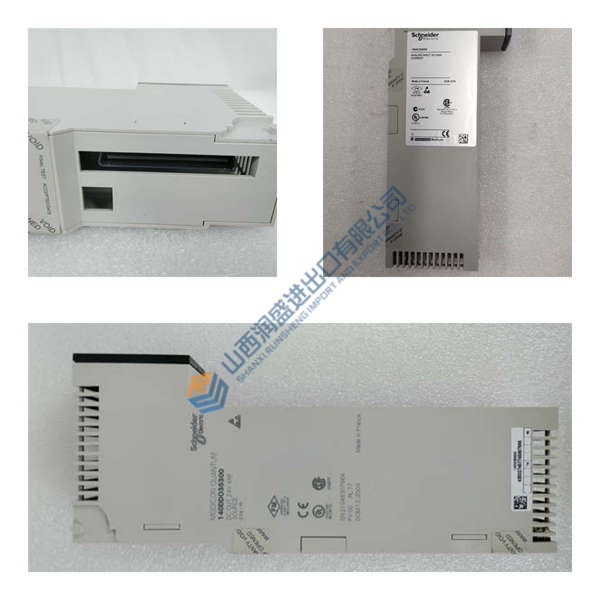Product Introduction
The Basler DECS-100 is the world’s best-selling digital AVR because it packs a 5 MW-capable brain into a lunch-box-sized, fully potted brick that shrugs off 60 °C desert heat and –40 °C Arctic nights. Launched in 2001 as Basler’s fifth-generation microprocessor exciter, the Basler DECS-100 instantly retired analog rheostats on everything from 500 kW diesel gensets to 5 MW hydro turbines. One quarter-turn quick-connect terminal block, one RS-232 port, and the free BESTCOMS wizard turn a 3-hour commissioning nightmare into a 12-minute coffee break.
At its core, the Basler DECS-100 fires 7 A continuous into any shunt, PMG, or auxiliary-wound field while four operating modes—AVR, FCR, VAR, and PF—let a single unit engine island, parallel, or droop-share with the grid. The patented Auto-Tune PID wizard watches your machine’s first ramp, calculates optimum gains in 8 seconds, then locks them into non-volatile EEPROM. No more oscilloscope dances; just press “TUNE” and watch terminal voltage settle within 0.25 %.
Twenty-five years later, the Basler DECS-100 still ships 4,000 units a year because the same 2001 firmware runs on Windows 11, still passes UL/CSA/CE, and still costs less than a new iPhone. One Basler DECS-100, one lifetime of flicker-free power.
Core Advantages and Technical Highlights
7 A Continuous / 10 A Forcing in a Potted Brick
The Basler DECS-100 squeezes a 1,200 W IGBT bridge into a 51 mm thick epoxy block that survives 10 g vibration on mobile crusher gensets. No fan, no dust, no derate: full 7 A from –40 °C to +60 °C. When the grid collapses, 135 V / 10 A forcing slams the rotor in 0.8 s—restoring voltage before the PLC even sees a dip.
Four Control Modes, Zero Code
Switch from AVR to PF control with one contact closure. Islanded hospitals run AVR; paralleled peak-shavers run VAR; co-gen plants run PF—all from the same Basler DECS-100. Droop, line-drop, and cross-current compensation are DIP-switch simple, yet BESTCOMS lets you curve-shape each mode for non-linear LED lighting loads.
Auto-Tune PID + Real-Time Metering
Press the front-panel “TUNE” button and the Basler DECS-100 injects a 2 Hz dither, measures time-constant and gain margin, then writes perfect PID numbers in 8 s. Live oscilloscope screens in BESTCOMS show field volts, amps, VARs, and watts to 0.1 %—no external meters required.
Five Limiters in One Chip
Soft-start ramps field current in 2–30 s to protect lamp filaments. Under-excitation (UEL), over-excitation (OEL), stator current (SCL), and V/Hz limiters run in parallel, each with independent time delays. A single Basler DECS-100 replaces five analog relay cards.
Voltage Matching Before Breaker Close
Close-angle prediction plus 0.5 % matching accuracy lets the Basler DECS-100 sync a 4 MW turbine to the utility in 3 seconds flat. No external synchronizer needed; just wire 52C auxiliary contacts to the “VM” input.
Typical Application Scenarios
Remote Alaskan micro-grids pair a Cat 3516 with a Basler DECS-100 in VAR mode to absorb wind gusts. When the 900 kW turbine spikes, the diesel instantly drops 400 kVAR in 180 ms—keeping village lights rock-steady without battery banks.
Brazilian sugar mills run 3 MW bagasse boilers 24/7. The Basler DECS-100’s OEL limiter caps field current at 105 % for 90 s during crusher starts, then auto-resumes 100 %—preventing $28 k rotor burns every harvest.
Offshore platforms retrofit 2.5 MW emergency diesels in 4 hours: remove the old carbon-pile regulator, bolt the Basler DECS-100 to the same four holes, copy the BESTCOMS file from the sister rig. Voltage settles within 0.3 % on the first crank.
Hospital tri-gen plants parallel three 1 MW cats in PF mode. The Basler DECS-100’s cross-current loop shares reactive load to 2 %, eliminating circulating currents that used to trip breakers every shift change.
Honeywell UDHI Card 51305408-100 TDC- 2000 _____H43
Honeywell URCD Card 51305552 TDC- 2000 _____H41
Honeywell Hwy Logic Board GPCI 30732396-501 TDC 2000 *
Honeywell Board 4DP7APX10211 TDC- 2000 ______H39
Honeywell Keyboard 51403165-400 TDC- 3000 _____H69
Honeywell A/D Converter R3 4D7APXAD211 TDC 2000 ____H45
Honeywell Switching Board 30735863-502 TDC 2000 ____ H6
HONEYWELL TDC3000 51304362-150 LOW LEVEL ANALOG MUX
HONEYWELL TDC3000 51304754-150 HIGH LEVEL ANALOG INPUT
Honeywell TDC3000 K2LCN-2 Local Control Network
Honeywell Regulator Card 30731808-001TDC 2000 _____H44
Honeywell Output Card 30731811-1 TDC 2000 ____HH11
Honeywell HWY 2 Card 30731814-4 TDC 2000 ______HH3
Honeywell 12K Rom/1K Ram 30750218-9 TDC 2000 ______HH5
Honeywell CMOS Card 30735857-01 TDC 2000 _____HH9
Honeywell CMOS Memory 30735857-01 TDC- 2000 ____ H40
Honeywell Trend Memory 30735974-2 TDC- 2000 _____H37
Honeywell Board 4DP7APX IO211 TDC- 2000 ____H42
Honeywell Trend Memory PWB 30735974-4 TDC 2000 ____HH2








